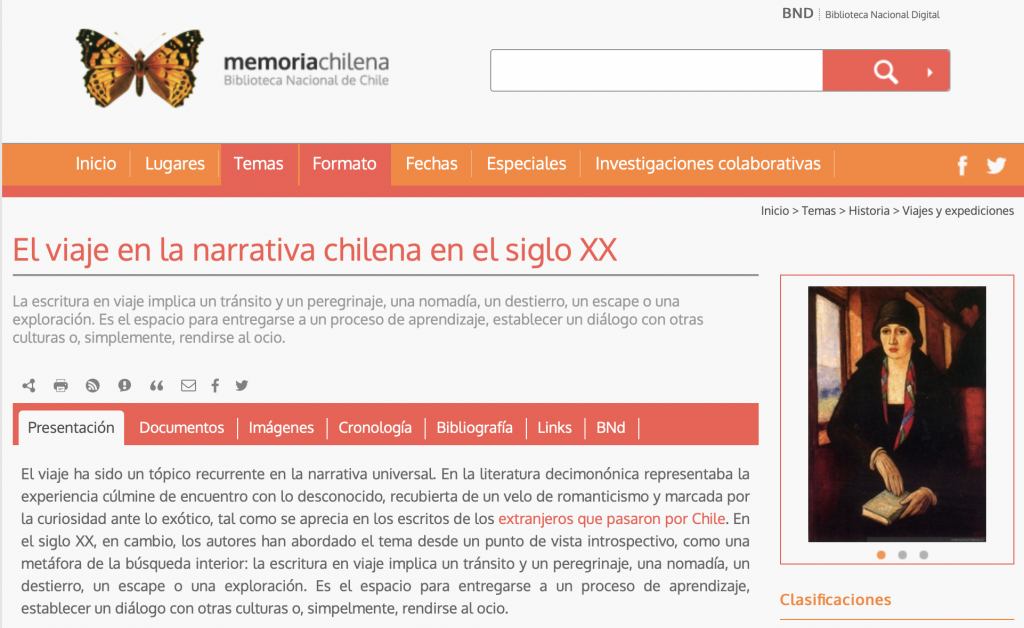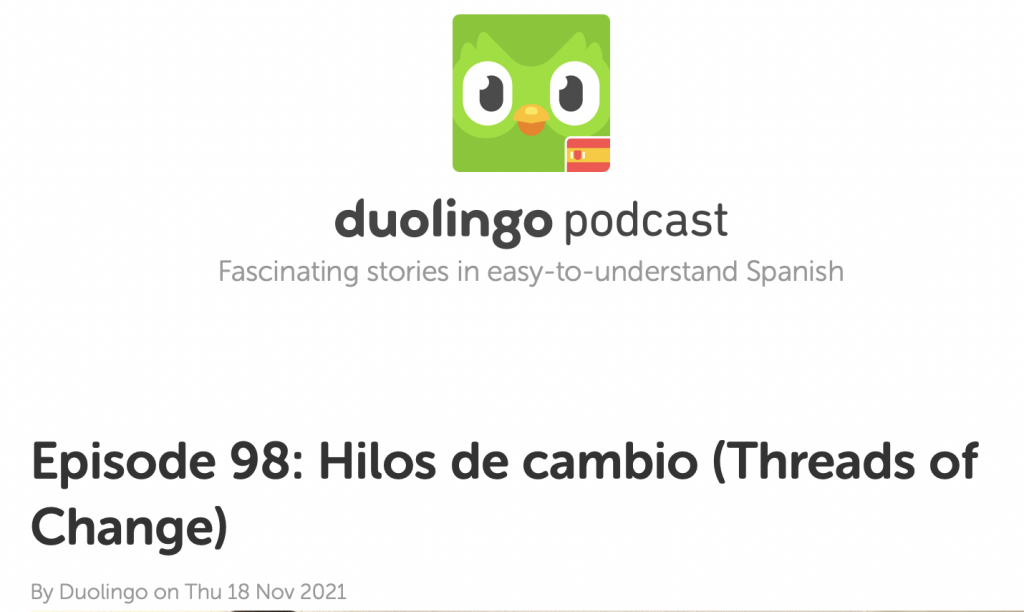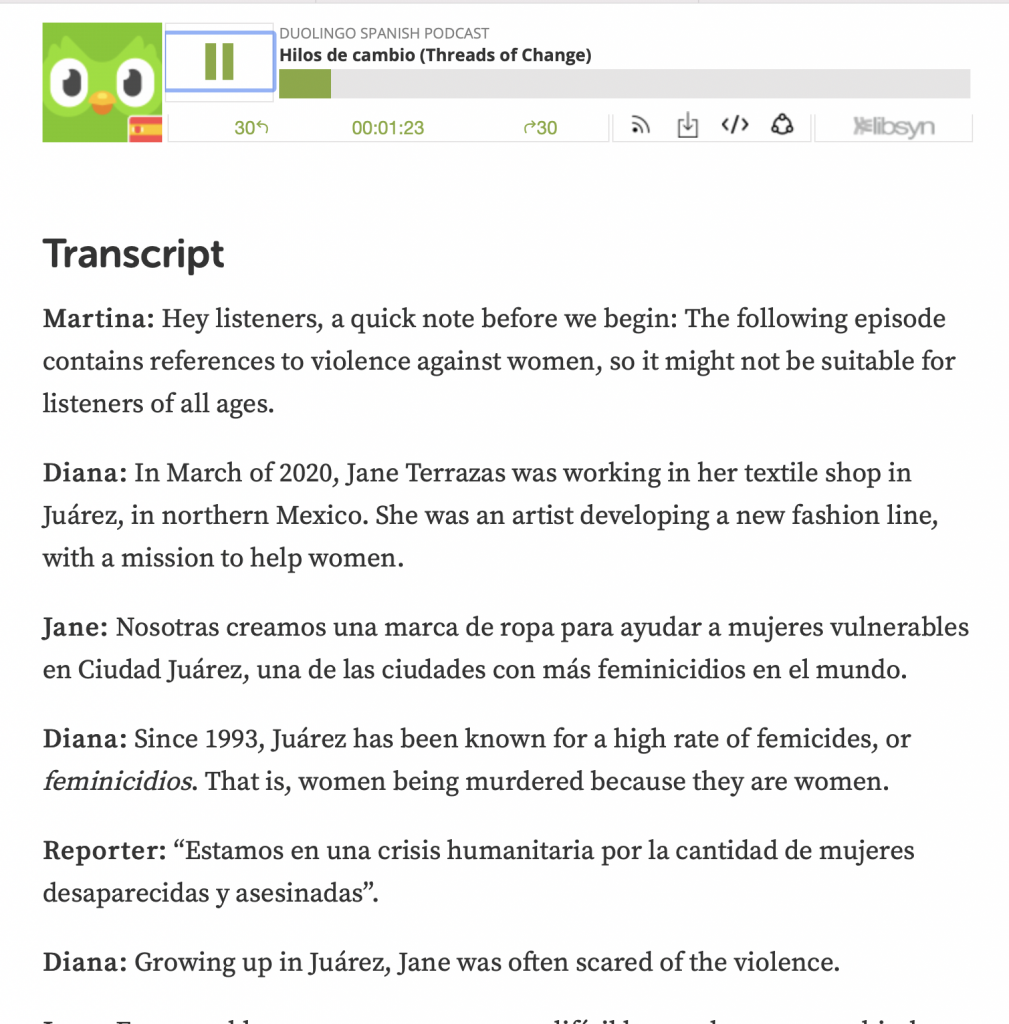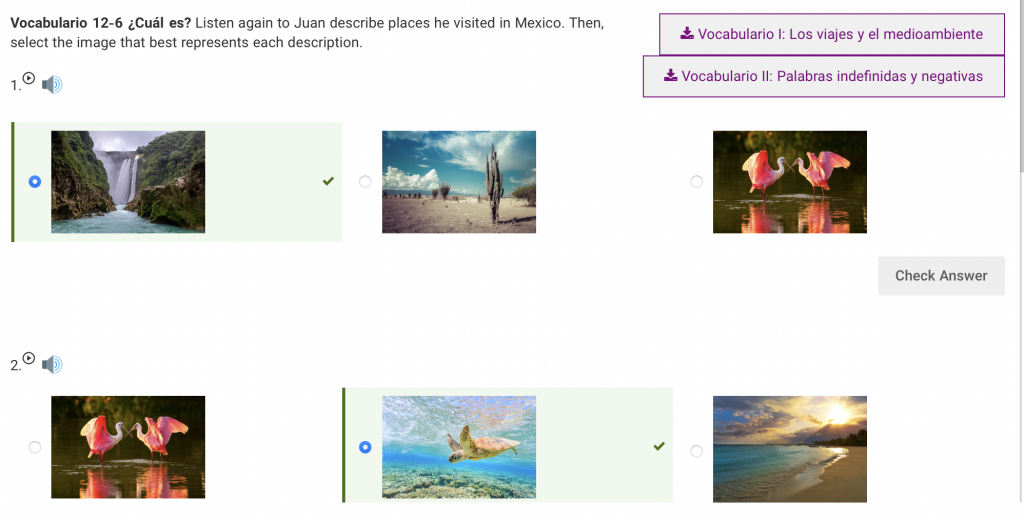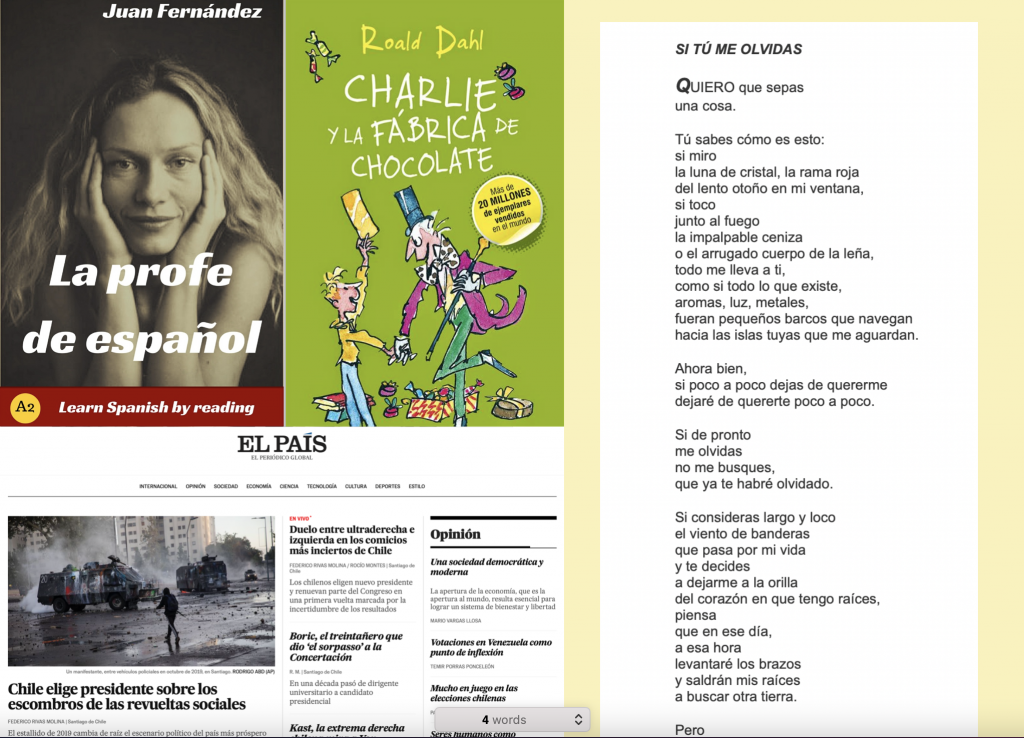Exploring Culture
Through many different sources I have been learning about culture in hispanic countries and communities – through class assignments, books, academic journal articles in psychology, documentaries, videos, art, and communication with language partners in Spain and South America.
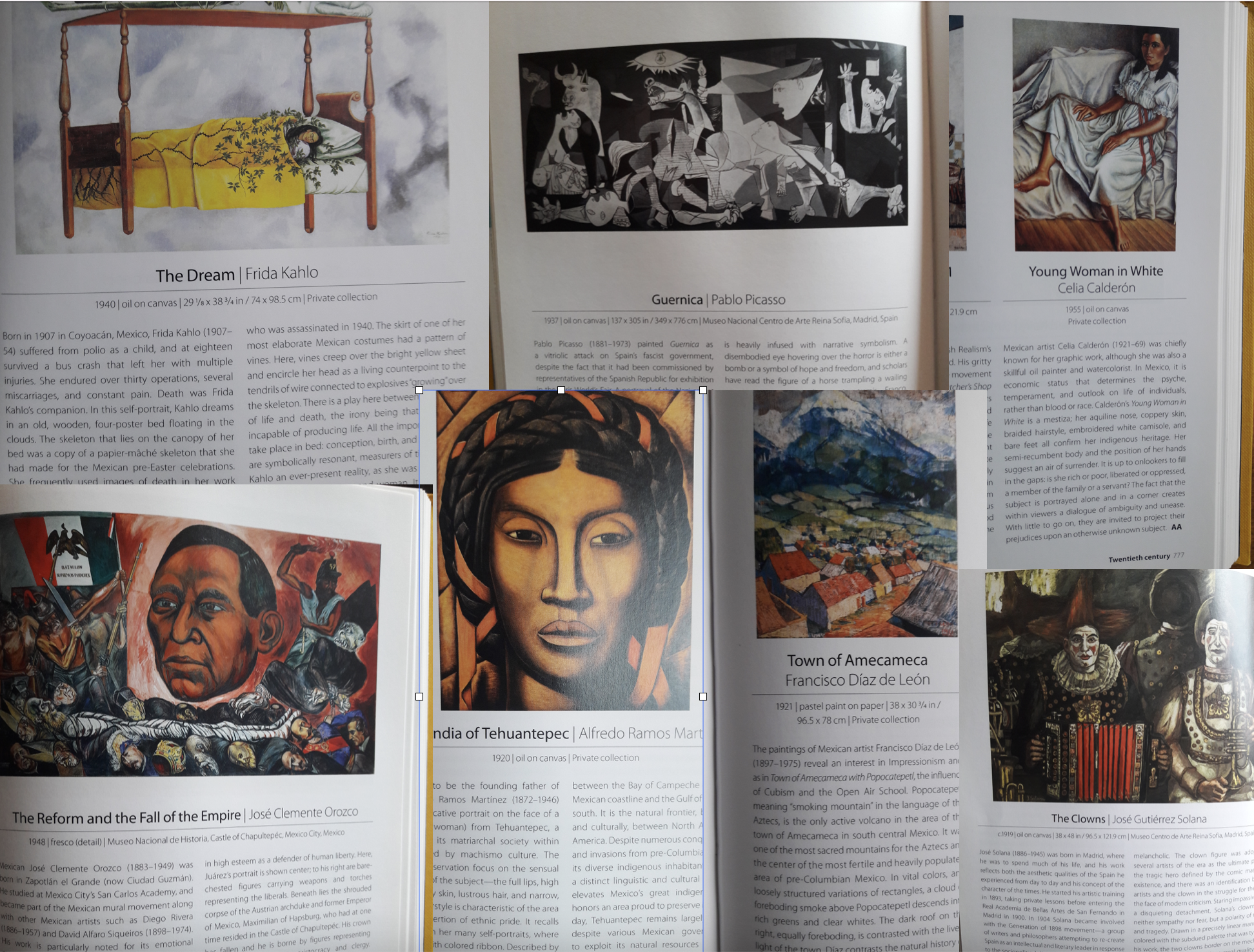
Art is one of my most favorite things. I love to explore different artists from Spain and Latin America like Frida Kahlo, Pablo Picasso, Celia Calderón, José Clemente Orozco, Alfredo Ramos Martínez, Francisco Díaz de León, and José Gutiérrez Solana. This book also gives information about the artwork and artist.
Farthing, S. (2011). 1001 Paintings You Must See Before You Die. Quintessence.
Through my conversation with language partners, I realized I held an assumption that a large number of foreigners would have a good command of English or had received a good education in English. I learned that not everyone has had a good education in English. I also assumed the Siesta is observed strictly, but especially in the larger cities, the tradition is waning in order to keep pace with the global market. I thought life in any hispanic culture had a slower pace, was more relaxed, and simple, but this is not necessarily the case. Also, I have learned about different foods and how a dish may vary among hispanic countries.
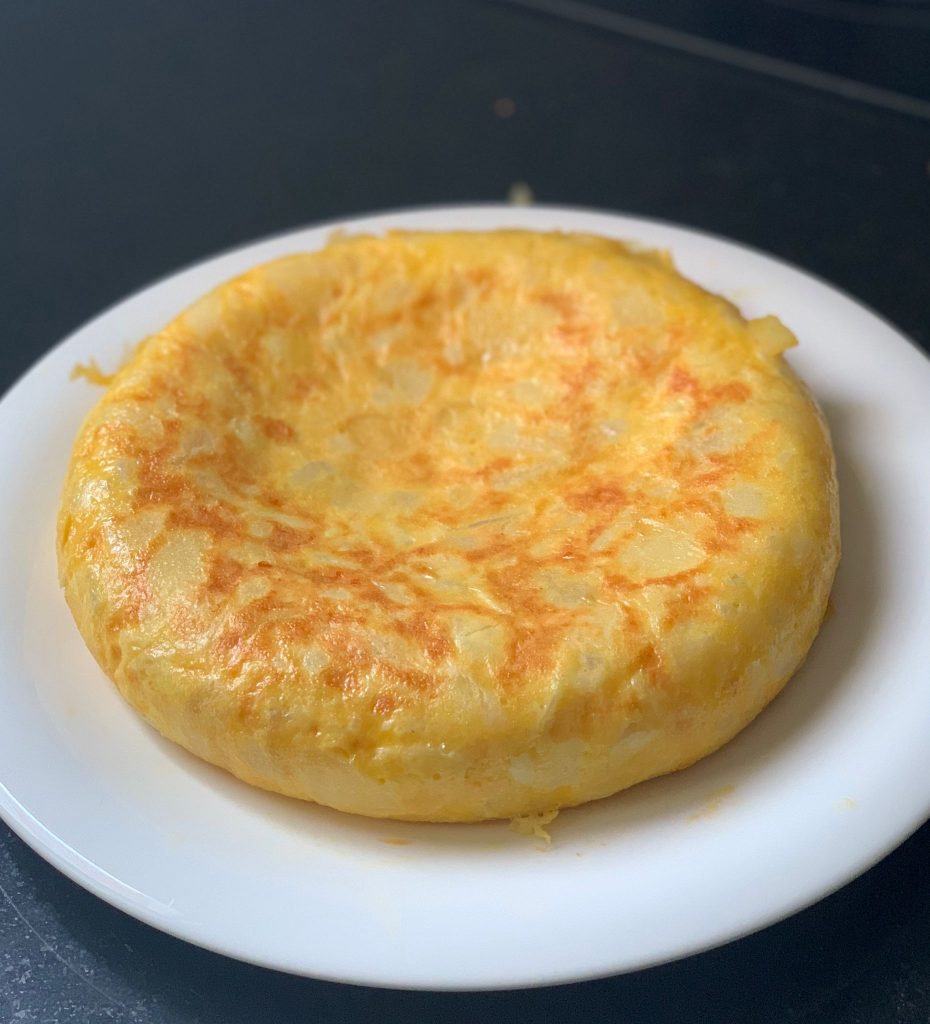
My language partner from Madrid, Spain shared this photo of the Spanish tortilla, which is made with eggs and potatoes like an omelet. To my surprise, it is much different from the Mexican tortilla, which is typically made of corn or wheat.
In Spanish class, we do cultural exploration (Exploración Cultural) and research a different topic for each unit. I have learned about family, university life, food, traditions, fitness, sports, wellbeing, professions, and ecotourism in Spanish-speaking countries. With each topic, we had to research and write about the similarities and differences between U.S. culture and cultures in Spanish-speaking countries. Also, the readings on cultural pieces strengthened my comprehension ability.
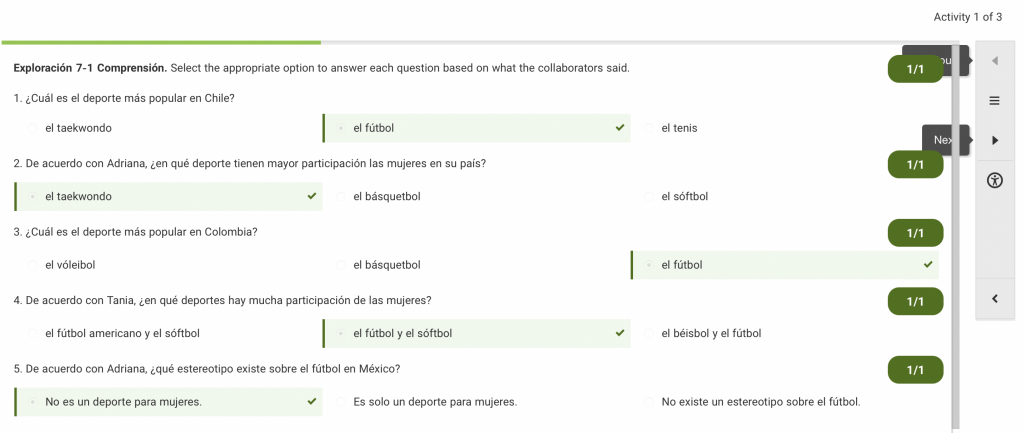
Multicultural Awareness in Counseling Education
Being in the counseling program, a large part of my education involves multicultural awareness. I have learned about general Latino/a American cultural values, such as familismo (centrality of family), respeto (formal and polite attitude toward elders and authority), personalismo and simpatia (close personal relationships that promote pleasant and nonconflicting interactions).
Below is my Personal Learning List, which includes books I have been reading, videos I have been watching and any events I have attended. These resources have expanded my knowledge and understanding of hispanic culture.
Personal-Learning-ListEngaging in Communities
Since I have been involved with other pursuits, my engagement in hispanic communities has been limited. I try to engage in ways that I am able for now. I have made many friends and talk with people throughout the Spanish-speaking world through a free language app, called HelloTalk, and through Zoom with my language partners. You can learn a little more about that on my Activities page.
In 2022, I am going to South America, Argentina and Chile for most of the time. I plan to participate in activities, meet new people, try things that are unique to the culture like tango dancing, mate, asado and other traditional gastronomy. I will be taking Spanish classes. Also, I hope to make connections and have opportunities related to my counseling degree and professional development. Part of the reason I am learning Spanish is to offer mental health services to Spanish speakers in my future practice as a Licensed Professional Counselor.
Presentational Writing
My writing assignments required different forms of written communication – writing a schedule, a nomination letter, a brochure, an advertisement, an infographic, and a number of compositions on cultural topics.
Writing is about crafting one’s thoughts. With only basic vocabulary and grammar, I had to learn how to distill complex ideas and thoughts in English into more simple communication in Spanish. I had to think about selecting words that best fit the meaning in English. I have noticed that over time, I am able to think and construct more complex sentences in Spanish. It takes me less time do so and I do not need the aid of a dictionary or my textbook for some writing.
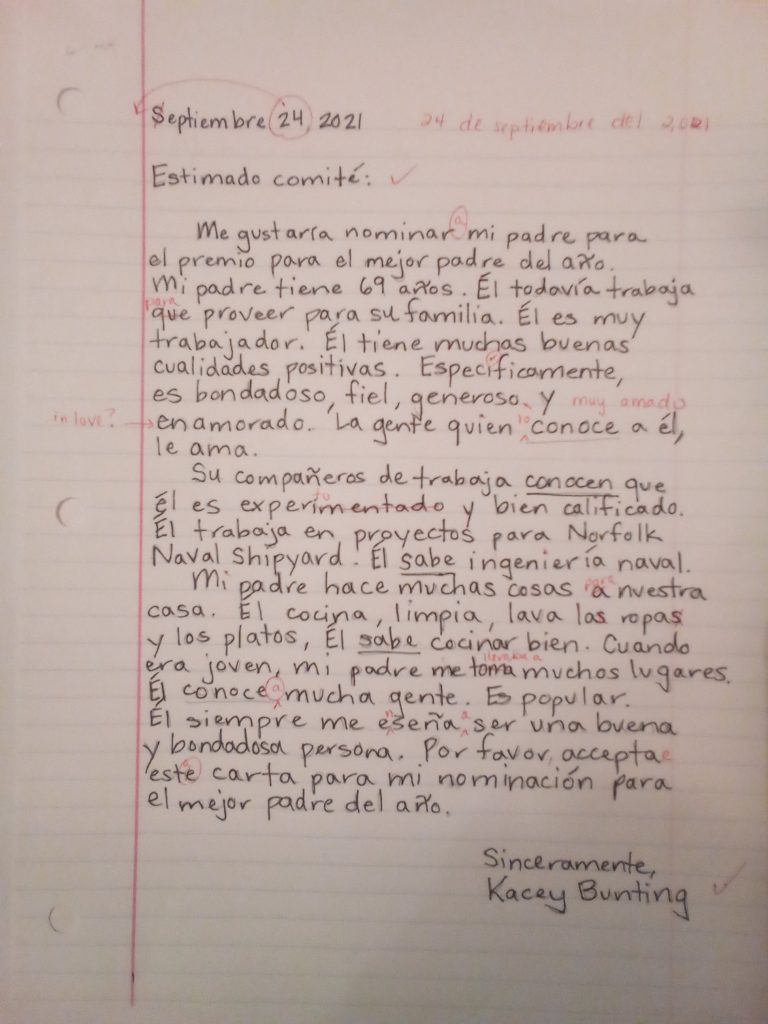
For one assignment, I wrote a letter of nomination. Having to craft the content helped me to decide which words to use, sentence structures and how I can articulate my thoughts at a novice level of Spanish.
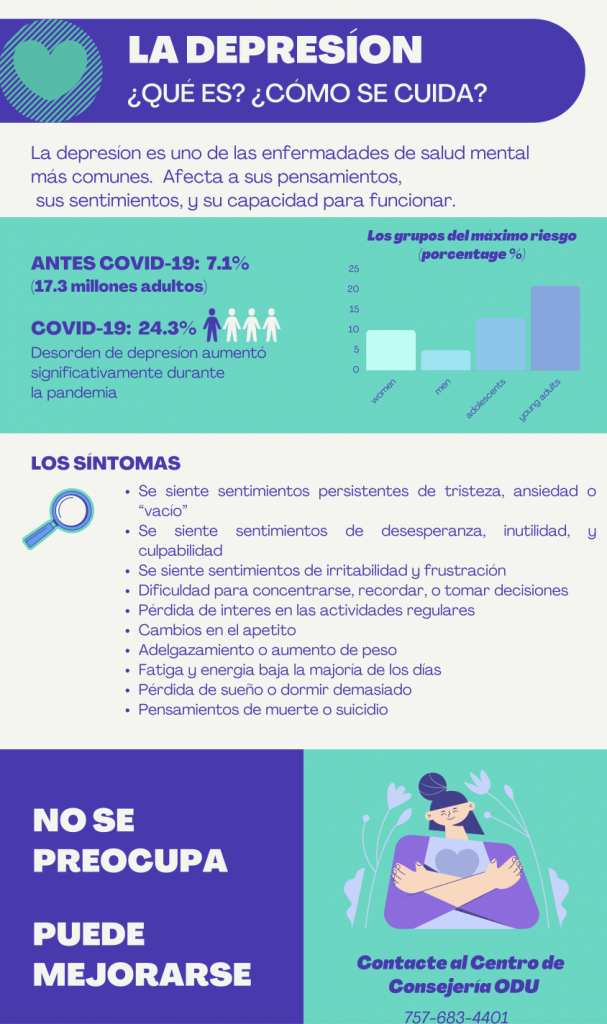
I made an infographic about depression and wellness. I had to think about how to present the information in a concise way, which made me refine my writing in Spanish.
Interpretive Listening
I have engaged in a variety of listening experiences in class, through the textbook, the Duolingo Spanish podcast, Youglish.com, documentaries, shows and movies on Amazon Prime and Netflix, and music. I think it is important to utilize a variety of resources to practice interpretive listening.
Listening is the most challenging part of language learning for me. I usually have to listen to something repeatedly or if someone is speaking to me, I ask them to speak more slowly. Over time, I have been comprehending more of what is being said without having it repeated. As I have learned more vocabulary and pronunciation, I am able to identify more words and even be able to spell what I hear. Also, I have gained enough Spanish that I can hear differences in pronunciation from Spanish-speakers from different countries.
DUOLINGO PODCAST IN SPANISH
This podcast features relevant stories about Latin American people in a level of Spanish that is easy to understand at my current level. The host does speak in English intermittently to provide more understanding. However, this podcast has helped me practice my listening skills while also learning about real experiences of Latino/a people.
CONTRASEÑA TEXTBOOK
Some of the assignments require me to listen and then answer questions to test my comprehension. I have noticed that I am gaining more and more proficiency as time goes by.
Interpretive Reading
I have been reading different mediums in Spanish – poetry, articles, and books. In class, the professor reads to us while displaying the book on the projector. We see the text as it is being spoken. We talk about vocabulary, comprehension, and idiomatic expressions. We also have done research for cultural investigation on various topics.
Outside of class I have read poetry from prominent poets in Latin America, such as: Pablo Neruda and Gabriel Mistrel from Chile and Julio Cortázar from Argentina. I read articles from websites such as El País and Memoria Chile, which I have discussed with language partners. I vary the type and length of content I read. Longer, more advanced texts challenge me and shorter, beginner level texts keeps reading fun and gives me confidence.
Through my progression at a beginner’s level, the challenging part of reading has been my limited vocabulary, understanding sentence structure, recognizing verb tenses and object pronouns, and idioms. I have to look up many vocabulary words. The reading comprehension strategies in the Contraseña textbook have been helpful, such as: inferring, gisting, using familiar words to predict content, listening with purpose, and taking notes to help with listening comprehension. The more I have been reading, the more words, object pronouns, and verb tenses I can recognize.
Since I am going to travel to Chile, I think it is important to learn as much as possible about the history, politics, and social aspects of the country. Having more knowledge will enrich my interaction with the Chilean people I met and enrich the experiences I have when been in different places. Memoria Chilena is an excellent and reputable resource for learning all manner of topics about Chile. My language partner and friend, who lives in Santiago, recommended this website.
